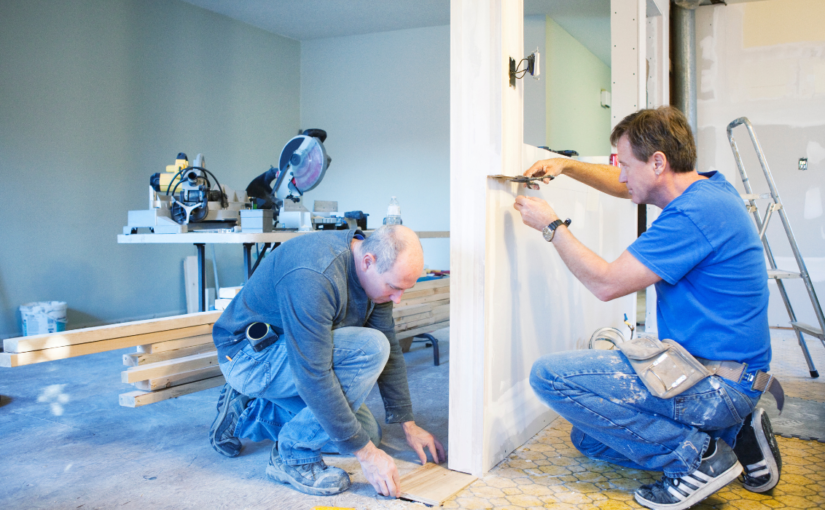back
Multifamily Financing Options for Renovations and Upgrades
04-2023

Many real estate investors choose multifamily properties as their preferred investment type. In comparison to single-family homes, these properties provide a consistent income and are frequently regarded as a safer investment choice. Nevertheless, it might be difficult to keep these properties maintained and modern. Financing alternatives for multifamily improvements and renovations become relevant in this situation. In this blog post, we’ll go through the many financing alternatives that are available for multifamily renovations and upgrades.
-
Traditional Bank Loans
Traditional bank loans are one of the most well-liked methods for multifamily restorations and improvements. Usually, bigger restoration projects that demand a lot of money are funded using these loans. Investors with high credit scores and a stable financial history may find traditional bank loans to be a wonderful option.
Traditional bank loans’ primary benefit is that their interest rates are often modest. Due to lower interest costs during the loan’s term, investors stand to benefit greatly. Additionally, the payback terms for conventional bank loans are typically longer, which might lower monthly payments.
It may be challenging to be approved for conventional bank loans, though. A strong financial history, a high credit score, and assets to use as security for the loan are requirements for investors. Additionally, the lengthy application procedure may cause a delay in the rehabilitation project’s beginning.
-
Small Business Administration (SBA) Loans
Other well-liked financing options for multifamily renovations and improvements include SBA loans. These Small Business Administration-guaranteed loans are frequently employed for more affordable, smaller-scale remodeling projects.
Low interest rates and extended repayment terms are SBA loans’ major advantages. Due to lower monthly payments and reduced interest costs, investors can save money. In addition, applying for SBA loans typically takes less time than for loans from conventional banks.
But it might be challenging to be approved for SBA loans. A strong financial history, a high credit score, and assets to use as security for the loan are requirements for investors. Moreover, the application process for an SBA loan may take a while, which may cause the remodeling project to start later than planned.
-
Bridge Loans
The financing of multifamily renovations and improvements is done via bridge loans, which are short-term loans. The majority of the time, these loans are used by investors who require immediate money but lack the collateral or credit history required to be approved for standard bank loans or SBA loans.
Bridge loans’ quickest application process is its major benefit. Typically, investors can start their renovation project within a few days after receiving funds, which can aid them. Bridge loans are also frequently unsecured, so investors can obtain funding without putting up any assets as security.
However, compared to SBA loans or conventional bank loans, bridge loans typically have higher interest rates. As a result, investors will have to pay more interest overall. Furthermore, as bridge loans typically have shorter payback terms than traditional loans, their monthly payments may be greater.
-
Private Money Lenders
Investors in real estate can borrow money from private money lenders, which can be either people or businesses. Multifamily renovations and improvements are frequently funded by these loans.
Private lenders have a quick application process, which is by far their greatest benefit. Typically, investors can start their renovation project within a few days after receiving funds, which can aid them. Furthermore, compared to traditional bank lenders, private money lenders are typically more accommodating, which means that investors may find it simpler to be approved for the loan.
Conversely, SBA loans or conventional bank loans typically have lower interest rates than private money lenders. As a result, investors will have to pay more interest overall. The loan may also need to be secured by collateral, according to private money lenders.
-
FHA 203(k) Loan
The financing of multifamily renovations and upgrades is provided by FHA 203(k) loans, which are backed by the government. Smaller remodeling projects with lower finance requirements frequently use these loans.
The primary benefit of FHA 203(k) loans is that they let investors finance both the cost of purchasing the property and the cost of renovations in one loan. Investors looking to simplify the funding procedure may find this advantageous. Furthermore, compared to conventional bank loans, FHA 203(k) loans have less stringent credit score standards, so borrowers with weaker credit scores may still be eligible for the loan.
However, compared to SBA loans or conventional bank loans, FHA 203(k) loans often have higher interest rates. The application process for these loans can be more difficult due to their tight criteria and standards. For the renovation project to be completed, investors will also need to collaborate with a contractor that has been authorized by the FHA.
F2H Capital Group is a debt advisory firm specializing in negotiating the best terms for your commercial real estate projects. The company offers a range of financial products and services, including fixed loans, bridge loans, and construction loans across all asset types. Please contact us for any of your financing needs.

